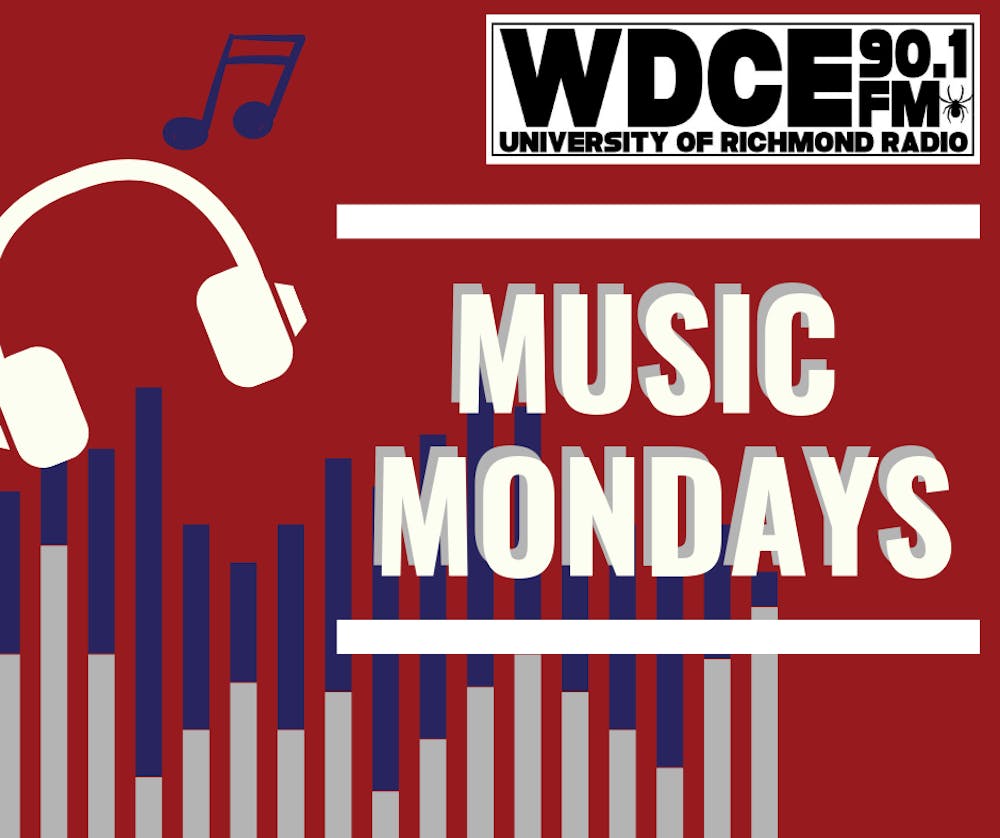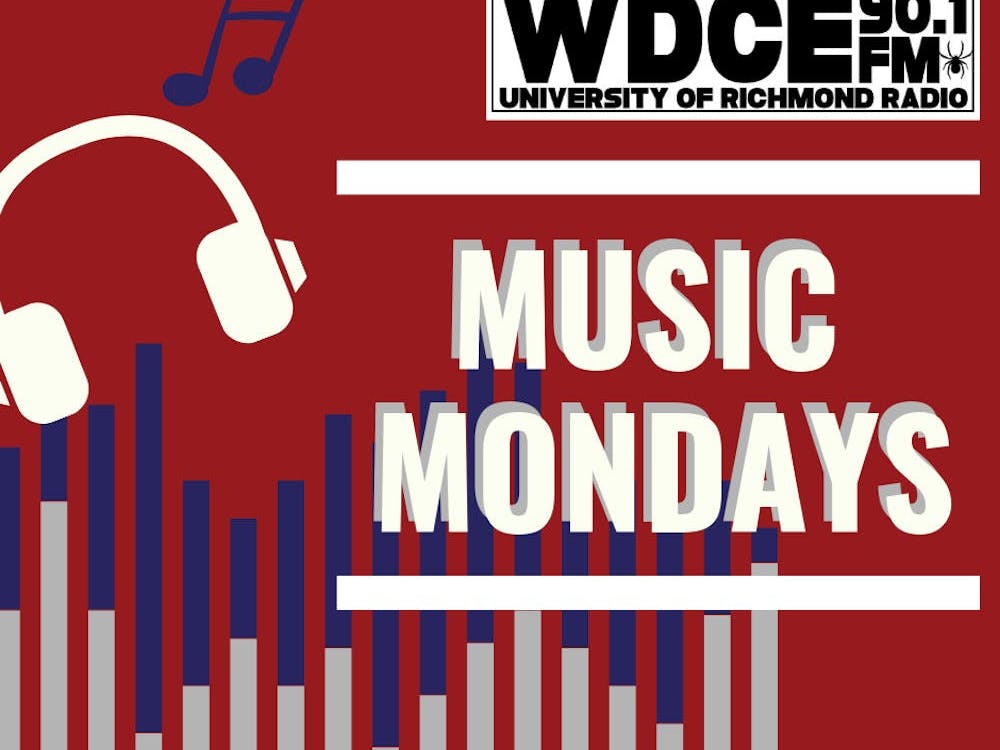Throughout the canon of modern music history, there are certain legendary years that stand out among the rest. I am not talking about the years that functionally changed music, such as 1964 which both debuted the Moog synthesizer and had Bob Dylan go electric. Nor am I talking about the years that symbolically changed music, like in 1959 on “the day the music died” as Buddy Holly, Ritchie Valens and J. P. "The Big Bopper'' Richardson's plane crashed in an Iowan field. What I am discussing is something much sweeter and much less tragic: the years where music flourished. These are the years where good music – really good music – was like wine in that place where wine flows like water. These are the 1969s, the 1991s and the 2003s where for one reason or another, every major artist just happened to decide all within the same year to release groundbreaking work. These are years that future music enthusiasts look back at longingly, chin notched in palms, and say, “I wish I were there for that.” During these moments, music history was made every other Friday. And I, humble Collegian columnist and “wish I were there for that” music-enthusiast, declare that 2021 was such a year.
You may be asking me: “Zac, humblest of all columnists, how can you make such a grand statement? How can 2021 possibly live up to the stature of those other years? You’re a certified madman!” Yes, it is true; I may be mad. The year 1969 birthed Led Zeppelin and The Stooges, and bid The Beatles adieu with “Abbey Road.” Spectators of 1991 saw punk shatter the mainstream with “Nevermind,” MBV release “Loveless” and Massive Attack birth trip-hop with “Blue Lines.” And in 2003, indie reigned supreme with The Postal Service’s “Give Up,” Yeah Yeah Yeahs' “Fever To Tell” and The White Stripes’ “Elephant.” So how is it possible for 2021 to rival this pantheon of gods? Well, here are three albums to show just that:
1. “Cavalcade” - Black Midi
This list is in no way arranged by merit; however, after the hole I dug myself into with my spiel, I knew I had to come out swinging in order to escape. This is why I have elected to put “Cavalcade” first. With this album, Black Midi mutates the recent post-punk revival sound into something distinctly exciting, creating a sort of progressive post-punk with its sprawling track lengths and eccentric instrumentation. If “Cavalcade” were a way for me to escape an actual hole, it would be a pulsating, non-euclidian ladder that would take a couple of years for me to “get it.” Essentially, it is artfully calculated, forward-thinking and genre-bending lunacy.
Speaking of coming out strong, there is no better example than the album’s opening track “John L,” which perfectly sets the stage for said lunacy to follow. From the get-go, the track assaults listeners with pounding drums and a layered violin-guitar melody that sounds as if Psycho’s shower scene instead took place at the Bates Jazz Club. Atop the cacophony, guitarist and vocalist Geordie Greep spins the relevant tale of the cyclical violence that is created when figureheads deify themselves with his one-of-a-kind voice and poetic lyricism: “No hack with an army will last long/ Before he breeds men who yearn for their own glory.”
Black Midi’s unhinged genius is not just created by the album’s explosive moments, as Black Midi often shines the brightest in the album’s more reserved pockets. The band’s patience is on full display on the track “Diamond Stuff,” which is six and a half minutes of progressive construction. Beginning bare with a soft repeated pluck, the song becomes more and more complex as it progresses. Vocals come in after a staggering two-minute plucking sequence, then sparse violins, and then after almost four minutes comes the most gentle crescendo I have ever heard. Angelic synths emerge like beams of light that guide listeners by the hand into a run of Morgan Simpson’s virtuosic jazz drumming. The drums then fade away into a nostalgic, singing horn that concludes the experience. If you are somehow not already sold on this album, they use a slide whistle on track three. Microphone: dropped.
2. “Frailty” - dltzk
Beep beep, boop boop, *insert viral TikTok sound*. This is what most believe hyperpop sounds like. While, yes, certain songs may resemble this format, like 100 Gec’s “gecgecgec” (which is a great song for the record), I am here to tell you otherwise. In most hyperpop songs, there are not that many beeps and boops, and I promise that allusions to internet culture are much more subtle although just as prevalent. All jokes aside, my point is that hyperpop is a divisive genre that often gets misrepresented. It is seen largely as a “meme,” whereas in reality, it is a rich and current genre that has artistic integrity in droves — and with an essence deriving from LGBTQ+ expression. And I think there is no finer example of that than dltzk’s “Frailty.”
With “Frailty,” dltzk crafts a hyperpop album that is uncharacteristically cohesive without sacrificing the absurdities and flamboyance that makes it hyperpop. Each song of the project flows into the next in a way that often makes me forget that I am listening to an album. Its blend of pop, electronic and emo is extremely consistent, yet endlessly creative, leaving room for plenty of “boops” and offering a treasure trove of samples. What is created is an album that encapsulates the anxieties of growing up in a generation ruled by internet culture. And let me tell you, this album has some incredible booping.
The track that I feel best embodies “Frailty” and dltzk’s talent is the closer, “let’s go home.” The song opens with a lullaby-esque electronic blinking melody reminiscent of the Postal Service before blasting-off into a glorious symphony of synths, noises and a driving dance beat. When I say it is impossible not to get up and jump around to this song, I mean it. Working in tandem with the instrumental are dltzk’s vocals, which are altered enough to act as an instrument themselves, often being accentuated to glide among the synths. Despite the upbeat instrumentation, he discusses being lost both in love and in one’s identity, singing, “Sorry, it’s kinda weird, I pretend that you’re mine/ And I won’t say a word ‘cause we’re all gonna die.’” This anxiety erupts just after the three-minute mark as the song quiets before exploding into an exhilarating climax, with dltzk’s often laid-back vocals becoming impassioned as he vents his frustrations; a moment of catharsis for himself and for his burdened, Gen Z audience.
3. “GLOW ON” - Turnstile
I would like to end this list by discussing what I believe to be the most important album of 2021. It is not the most creative album here — although it certainly does not lack creativity — nor is it the most boundary-breaking; however, if there is any project that I believe will endure both in itself and in the change that it marks, it is Turnstile’s “GLOW ON.”
Enjoy what you're reading?
Signup for our newsletter
Pop and hardcore punk are two pretty different genres. One is the endlessly catchy, bubble-gum, 4/4-hitmaking radio candy, and the other is a radically political, mosh-lit laiden guitar chug-fest. Can you tell which one is which? Well, not when you are listening to “GLOW ON.” With this album, Turnstile blurs the line between one of the most mainstream genres and one of the most inaccessible, creating an unforeseen, yet addictive form of pop punk.
No song exemplifies this hardcore/pop mutualism better than the track “T.L.C. (Turnstile Love Connection).” This moment exposes the seams of the relationship that Turnstile arranges by isolating a hardcore section and a pop section within the same track rather than blending them, in order to highlight their similarity. After around a minute of a hardcore/pop blend, the band breaks into the sludgiest riff of the album. Nothing about this moment is pop. The drums and guitar are raw and unforgiving as frontman Brendan Yates repeatedly shouts, “I want to thank you for letting me be myself/ I want to thank you for letting me see myself.” Then suddenly the live drumming is replaced with an electronic drumbeat, the guitar is traded for a gliding synth, and Yate’s vocals are drenched in effects —and yet, the rhythm, melody and lyrics remain the same. By mirroring the hardcore aesthetic with pop instrumentation, Turnstile demonstrates how the two genres are able to coexist and produce the same outcome and the same messaging.
As a result of their restyling of hardcore with pop aesthetics, Turnstile opens a door for how popular the genre can be. Recently, they have toured with $uicideboy$, collaborated with the hypebeast brand Carpet on merch and even made their television debut on “Late Night with Seth Meyers.” Turnstile may not have reinvented the wheel, but they did establish a future in which the mainstream may be a little more hardcore.
1969, 1991, 2003… 2021: Legendary years where legendary music was impossibly abundant. But what allowed for these years to be so rich with music? 1969 fell within both the Vietnam War and the climax of the psychedelic movement with Woodstock. During 1991 the Cold War was ending, the Internet was beginning and the Seattle grunge movement was picking up steam. In 2003, the U.S. invaded Iraq, and rock was resurging in New York. And finally, in 2021 (Do I even have to say it?), a global pandemic swept the planet. Along with that, there began both a massive post-punk revival coming out of England and the popularization of two underground genres, hardcore and hyperpop. So what circumstances allow for great music to be produced? Those in which the world must congregate around the most natural unifying and expressive force: good music.
Contact columnist Zac Zibaitis at zac.zibaitis@richmond.edu.
Support independent student media
You can make a tax-deductible donation by clicking the button below, which takes you to our secure PayPal account. The page is set up to receive contributions in whatever amount you designate. We look forward to using the money we raise to further our mission of providing honest and accurate information to students, faculty, staff, alumni and others in the general public.
Donate Now


